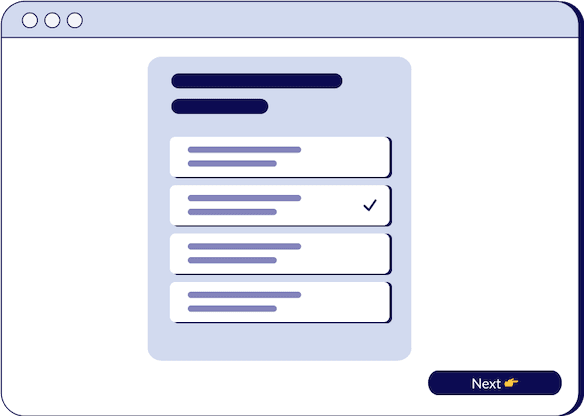
Running Discovery RCA
Matt Doyon
Chief Executive Officer @ Triple Session

- duration
- 12 min
- Average Score
- 80%
- Stars
- 5
In the world of sales, the ability to run effective discovery sessions and uncover the root cause of problems is what separates the best salespeople from the rest. Whether you're engaged in complex enterprise sales or one-call closed style transactional sales, mastering the art of root cause analysis can elevate your performance and drive better outcomes for your clients.
So, what exactly is root cause analysis? It is the process of identifying the source of a problem in order to define an appropriate solution. In sales, this means delving deep into the issues and challenges faced by your prospects to understand their pain points and uncover the underlying causes of their problems.
To successfully implement root cause analysis during your discovery calls, it is essential to avoid certain pitfalls and adopt a strategic approach. Let's explore some key strategies for running effective root cause analysis in sales.
Avoiding Missteps in Root Cause Analysis
One common mistake is attributing the problem to the absence of your product or service. This can be off-putting to prospects and may lead them to perceive you as a self-serving salesperson. Instead, focus on understanding the true cause of the problem by asking relevant questions and resisting the urge to push your product or service as the solution.
Another misstep is conducting superficial analysis by asking a series of "why" questions without adding much value. Superficial analysis not only fails to uncover the root cause but also risks alienating your prospects. It is crucial to ask targeted questions that evoke deep insights and involve the prospect in the problem-solving process.
Applying the Five Whys Framework
The Five Whys framework provides a structured approach to uncovering the root cause of a problem. It involves asking "why" multiple times to systematically dig deeper into the underlying issues. Here's how it works:
1. Start with the initial problem: Clearly identify the problem you're aiming to solve. For example, let's consider the low conversion rate from demo to closed deals.
2. Peel back one layer: Ask why the problem exists. In this case, the problem might be attributed to ineffective demos.
3. Drill deeper: Continue asking why to uncover the root cause. For instance, the root cause may be a lack of focus on addressing the prospect's pain points during demos.
4. Keep peeling back the layers: Ask why again to understand what is preventing the inclusion of pain points in the demos. It could be that the discovery process preceding the demo fails to gather sufficient information about the prospect's challenges and cost of inaction.
5. Address the human factor: Ask how the sales team is working to solve the problem. In this case, it may become apparent that the team lacks sufficient training on eliciting pain points and understanding the prospect's cost of inaction.
By employing the Five Whys framework, you can systematically analyze the problem and uncover its root causes. This not only allows you to gain a deeper understanding of the prospect's challenges but also positions you as a knowledgeable problem solver.
Powerful Questions for Root Cause Analysis
Crafting targeted questions is a crucial aspect of running effective root cause analysis. Here are some examples of questions you can use to guide the conversation:
1. What do you believe is causing this problem? This question invites the prospect to share their perspective and highlights their understanding of the issue.
2. What is your opinion as to why this is happening? This question shifts the focus to the prospect's insights and encourages them to explore potential causes.
3. What role does [X tool/process] play in this problem? By zooming in on specific tools or processes, you can identify any potential contributing factors.
4. What step comes right before this problem occurs? This question helps trace the problem back to its origin and uncover any preceding factors that may have contributed to it.
5. How are you working to solve this problem? This question explores the prospect's current approach and sheds light on their efforts to address the issue.
By incorporating these questions into your discussions with prospects, you can guide them toward a deeper analysis of the problem, thereby fostering productive conversations and building credibility.
Building Credibility Through Positioning Statements
Positioning statements are another powerful tool that can enhance your root cause analysis conversations. These statements allow you to introduce potential root causes in a way that demonstrates your industry expertise and builds trust with the prospect. For example:
"In my experience, when I see superficial discoveries happening, it usually means there's a problem with the discovery process itself. Could you tell me a bit more about your discovery process before demos?"
Integrating positioning statements into your root cause analysis discussions can enrich the conversation and position you as a trusted advisor with valuable insights.
Mastering the art of root cause analysis in sales can significantly impact your success in driving customer engagement and closing deals. By avoiding common missteps, applying the Five Whys framework, asking powerful questions, and incorporating positioning statements, you can uncover the true root causes of your prospects' problems. Embrace the power of root cause analysis in your sales process, and you'll be well on your way to achieving better results for yourself and your clients.
How Triple Session works
Training, Testing, & Feedback
Triple Session's proven formula accelerates your sales performance through consistent, organized practice, backed by measurable results.

Bite-Sized Knowledge
Our expert-led video sessions simplify complex sales concepts into easy-to-digest 5-15 minute videos for better retention.

Test Your Understanding
After each session, there will be a quiz to test your understanding and help you improve on any areas that need more attention.

Evaluate and Grow
Get progress snapshots after each quiz to track your improvements and achieve your sales mastery goals.